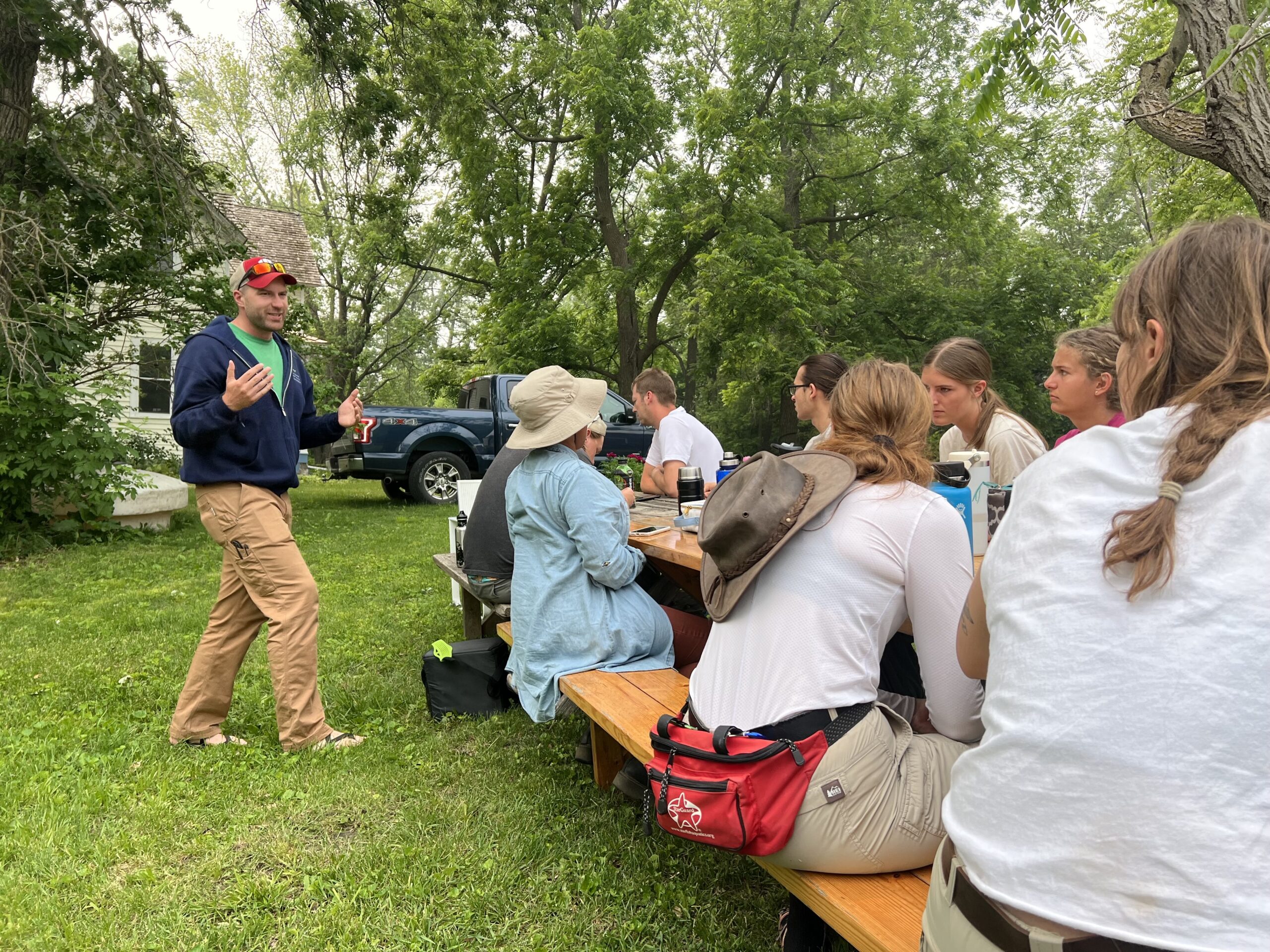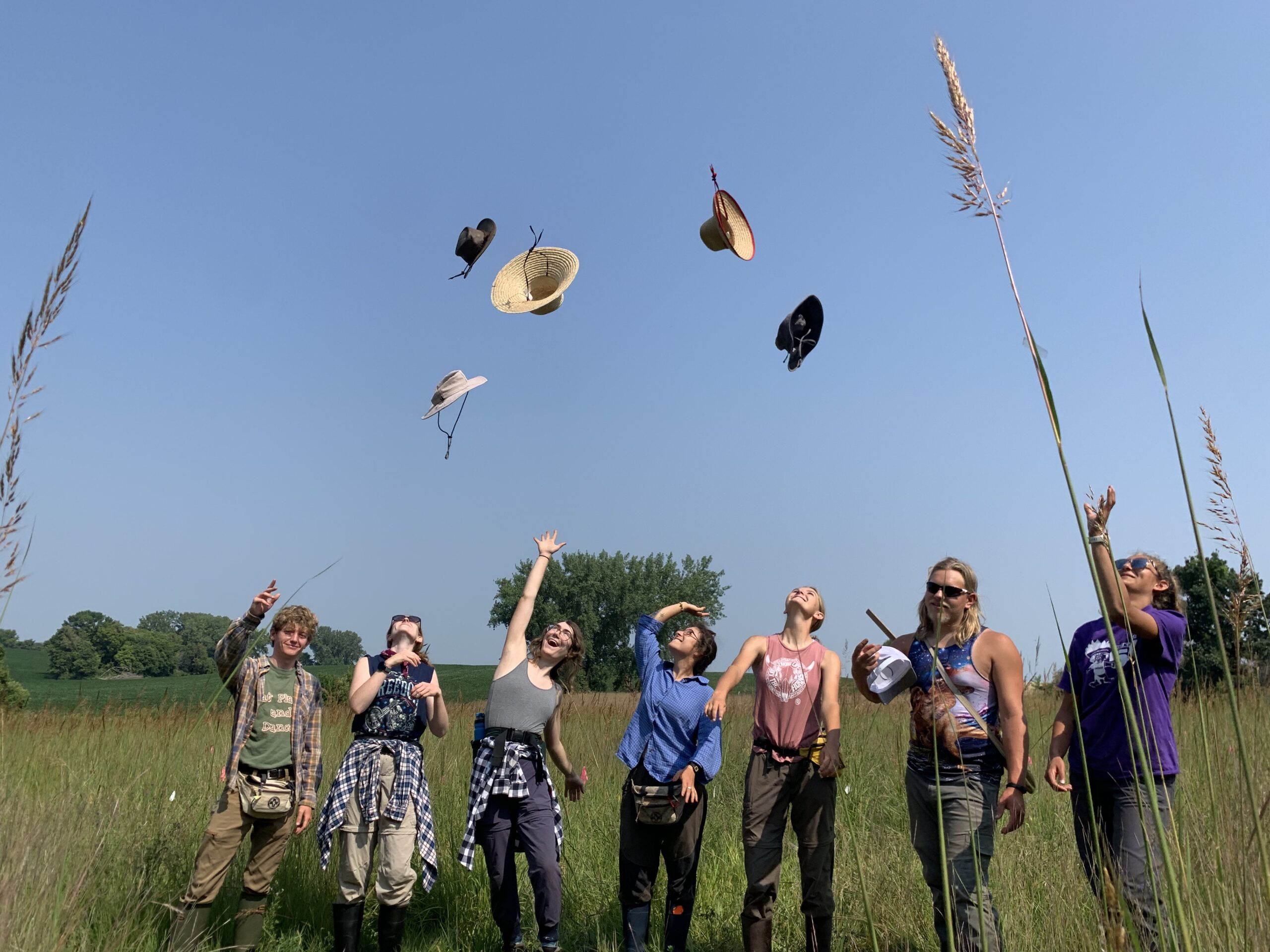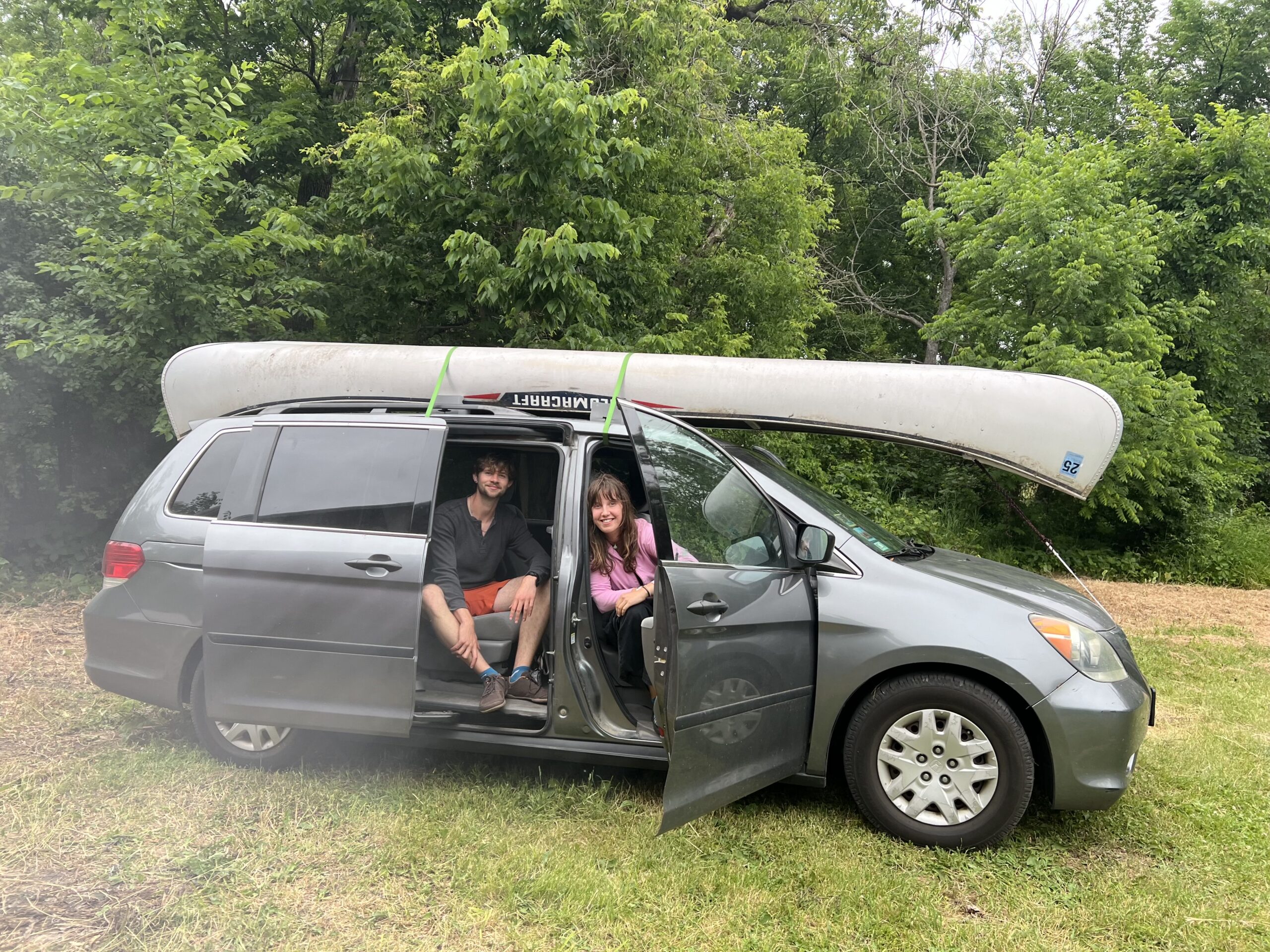The main research project is to determine evolutionary and ecological consequences of habitat fragmentation on purple coneflower, a beautiful and relatively common prairie flower. The research site is in western Minnesota and Dr. Stuart Wagenius is the field supervisor.
The narrow-leaved purple coneflower, Echinacea angustifolia, grows in the former tallgrass prairie and plains of North America, a habitat now fragmented by human activities such as agriculture, development, and roads. Echinacea now exists in isolated populations of various sizes. We know that seed production in isolated plants is limited by pollination and that genetic diversity is lower in small populations compared to large populations. We still don’t know the long-term consequences of reduced seed set, low-fitness seedlings, and reduced genetic diversity on the persistence of these populations.
During the summer, we will systematically map about 2000 plants in natural populations that have been observed annually since 1996 to compare the fecundity and mortality of plants in small and large populations. For another ongoing project, we will measure growth, flowering, and fitness traits of plants growing in research plots. The goal of this project is to estimate the genetic and environmental influences on Echinacea plants originating from small and large remnant populations. In addition to measuring plants and collecting data, we will maintain plots by weeding and establishing more native species.
You will gain skills in identifying plants, surveying natural plant populations, measuring plant traits in experimental plots, hand-pollinating plants, and observing & collecting insects. You will learn many techniques for experimental field work in plant ecology, genetics, and plant-insect interactions. Specific skills you may gain include collecting seed, surveying and GPS techniques, artificially pollinating flowers, identifying insects, mapping plants, and characterizing communities. You will also gain appreciation for long-term experiments and work as part of a team.

Jared (postdoc) gives a lunchtime talk on fire in prairies
A day on Team Echinacea:
There is no “typical” day with the Echinacea Project. Each day comes with a different set of opportunities and challenges, but there is an overall theme. We usually begin at our research station, the Hjelm House, with a team meeting at 8:30 am to discuss the plan for the day. Then we split up to complete that morning’s tasks. What we do varies a lot from week to week, but we often map Echinacea plants, measure plant heights, and assess timing of flowering. Most days, we head out to a nearby native prairie remnant sites or to one of our experimental plots. We then return to Hjelm for lunch. We eat lunch together at picnic tables and discuss project ideas, practice giving presentations, and bond as a team. After lunch, we head back out to the experimental plots or remnants. At the end of the day, we again meet as a team at Hjelm to debrief before leaving for the day.
Living:
The study area is a rural agricultural community. In Solem township there are dirt roads, a highway, railroad tracks, wetlands, and lots of corn and soybeans. There are prairie remnants scattered throughout the township. The closest towns to our field station are Kensington (zip code 56343) and Hoffman (zip code 56339), MN. Alexandria, a larger town with a selection of grocery stores, is 20 miles east. Morris is another town 25 miles to the southwest, which is home to a University of Minnesota campus. The non-local team members (REUs, field assistants, and RETs) live together near the field site and often share meals. You’ll live in a house with basic amenities and share the common area and kitchen with other team members, but you’ll have your own space and a bed. Outside of work, team members have enjoyed exploring local natural areas, canoeing, river tubing, fishing, going to movies, bowling, board/card games, visiting the county and state fair, traveling to Twin Cities Pride, and even embarking on weekend camping trips around the rest of the state. Several times throughout the summer, we like to host team bonfires, where folks bring a dish to share and we enjoy a meal and marshmallows over the fire.
Interested in applying to one of our positions? Check out our current opportunities. Keep in mind the positions we offer may vary from year to year. Thanks for reading all the way to the end of this page. We like to have people who read carefully & pay attention to details on our team. To indicate that you have read this page & paid attention to details, please include the word runestone in your cover letter. We’ll note that favorably when we review your application.




